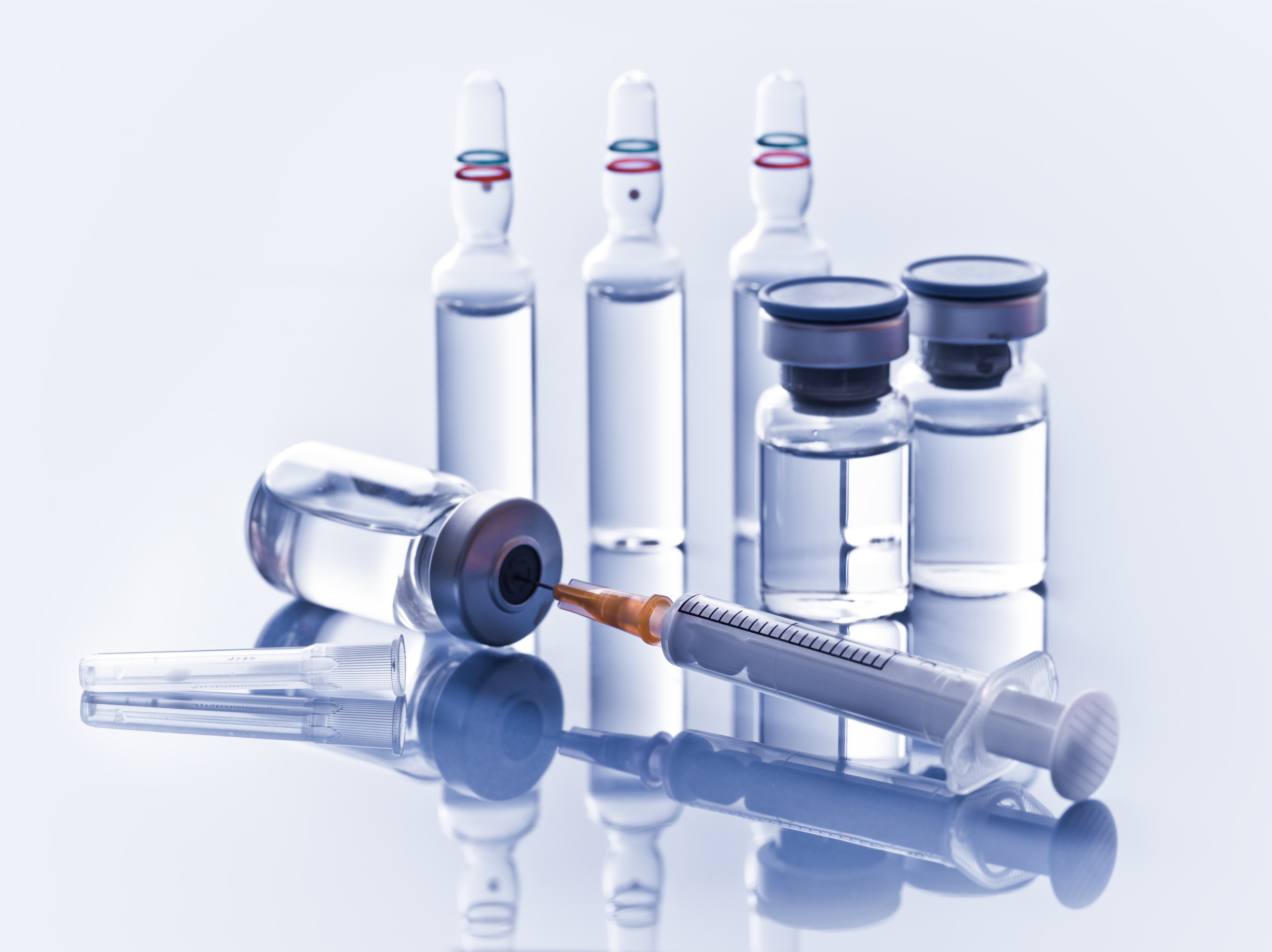First-generation antipsychotics
First generation ‘typical’ antipsychotics are an older class of antipsychotic than second generation ‘atypical’ antipsychotics. They are used primarily to treat positive symptoms including the experiences of perceptual abnormalities (hallucinations) and fixed, false, irrational beliefs (delusions).

All antipsychotics versus placebo
What are antipsychotics? This topic includes both first and second generation antipsychotics. Antipsychotics are effective for the symptoms of schizophrenia. Positive symptoms include the experiences of perceptual abnormalities (hallucinations) and fixed, false, irrational beliefs (delusions). Negative symptoms include a lack of ordinary mental activities such as emotional expression, social engagement, and motivation. Antipsychotics can also cause side effects. These include extrapyramidal symptoms such as dyskinesias (repetitive, involuntary, and purposeless body or facial movements), Parkinsonism (cogwheel muscle rigidity, pill-rolling tremor and reduced or slowed movements), akathisia (motor restlessness, especially in the legs, and resembling agitation), and dystonias (muscle contractions causing unusual…

Benperidol
What is benperidol? First generation ‘typical’ antipsychotics such as benperidol are an older class of antipsychotic than second generation ‘atypical’ antipsychotics. They are used primarily to treat positive symptoms including the experiences of perceptual abnormalities (hallucinations) and fixed, false, irrational beliefs (delusions). First generation antipsychotics may cause side effects which can differ depending on which antipsychotic is being administered and on individual differences in reaction to the drug. Reactions may include dyskinesias such as repetitive, involuntary, and purposeless body or facial movements, Parkinsonism (cogwheel muscle rigidity, pill-rolling tremor and reduced or slowed movements), akathisia (motor restlessness, especially in the legs,…

Bromperidol
What is bromperidol? First generation ‘typical’ antipsychotics such as bromperidol are an older class of antipsychotic than second generation ‘atypical’ antipsychotics. They are used primarily to treat positive symptoms including the experiences of perceptual abnormalities (hallucinations) and fixed, false, irrational beliefs (delusions). First generation antipsychotics may cause side effects which can differ depending on which antipsychotic is being administered and on individual differences in reaction to the drug. Reactions may include dyskinesias such as repetitive, involuntary, and purposeless body or facial movements, Parkinsonism (cogwheel muscle rigidity, pill-rolling tremor and reduced or slowed movements), akathisia (motor restlessness, especially in the legs,…

Chlorpromazine
What is chlorpromazine? First generation ‘typical’ antipsychotics such as chlorpromazine are an older class of antipsychotic than second generation ‘atypical’ antipsychotics. They are used primarily to treat positive symptoms including the experiences of perceptual abnormalities (hallucinations) and fixed, false, irrational beliefs (delusions). First generation antipsychotics may cause side effects which can differ depending on which antipsychotic is being administered and on individual differences in reaction to the drug. Reactions may include dyskinesias such as repetitive, involuntary, and purposeless body or facial movements, Parkinsonism (cogwheel muscle rigidity, pill-rolling tremor and reduced or slowed movements), akathisia (motor restlessness, especially in the legs,…

Droperidol
What is droperidol? First generation ‘typical’ antipsychotics such as droperidol are an older class of antipsychotic than second generation ‘atypical’ antipsychotics. They are used primarily to treat positive symptoms including the experiences of perceptual abnormalities (hallucinations) and fixed, false, irrational beliefs (delusions). First generation antipsychotics may cause side effects which can differ depending on which antipsychotic is being administered and on individual differences in reaction to the drug. Reactions may include dyskinesias such as repetitive, involuntary, and purposeless body or facial movements, Parkinsonism (cogwheel muscle rigidity, pill-rolling tremor and reduced or slowed movements), akathisia (motor restlessness, especially in the legs,…

First versus second generation
What are first and second-generation antipsychotics? First-generation ‘typical’ antipsychotics are an older class of antipsychotic than second-generation ‘atypical’ antipsychotics. First-generation antipsychotics are used primarily to treat positive symptoms such as hallucinations and delusions. Second-generation antipsychotics are also effective for the positive symptoms of schizophrenia, and it is sometimes claimed that they are more effective than first-generation antipsychotics in treating the negative symptoms of schizophrenia. Negative symptoms include a lack of ordinary mental activities such as emotional expression, social engagement, thinking and motivation. High potency first-generation antipsychotics usually have high affinity for the dopamine receptor and therefore induce extrapyramidal side effects…

Flupentixol
We have not found any systematic reviews on this topic that meet the Schizophrenia Library’s inclusion criteria. Pending enough primary studies, we invite reviews on this topic to be conducted. Alternatively, we will endeavour to conduct our own review to fill this gap in the Library. October 2020

Fluphenazine
What is fluphenazine? First generation ‘typical’ antipsychotics such as fluphenazine are an older class of antipsychotic than second generation ‘atypical’ antipsychotics. They are used primarily to treat positive symptoms including the experiences of perceptual abnormalities (hallucinations) and fixed, false, irrational beliefs (delusions). First generation antipsychotics may cause side effects which can differ depending on which antipsychotic is being administered and on individual differences in reaction to the drug. Reactions may include dyskinesias such as repetitive, involuntary, and purposeless body or facial movements, Parkinsonism (cogwheel muscle rigidity, pill-rolling tremor and reduced or slowed movements), akathisia (motor restlessness, especially in the legs,…

Fluspirilene
What is fluspirilene? First generation ‘typical’ antipsychotics such as fluspirilene are an older class of antipsychotic than second generation ‘atypical’ antipsychotics. They are used primarily to treat positive symptoms including the experiences of perceptual abnormalities (hallucinations) and fixed, false, irrational beliefs (delusions). First generation antipsychotics may cause side effects which can differ depending on which antipsychotic is being administered and on individual differences in reaction to the drug. Reactions may include dyskinesias such as repetitive, involuntary, and purposeless body or facial movements, Parkinsonism (cogwheel muscle rigidity, pill-rolling tremor and reduced or slowed movements), akathisia (motor restlessness, especially in the legs,…

Haloperidol
What is haloperidol? First generation ‘typical’ antipsychotics such as haloperidol are an older class of antipsychotic than second generation ‘atypical’ antipsychotics. They are used primarily to treat positive symptoms including the experiences of perceptual abnormalities (hallucinations) and fixed, false, irrational beliefs (delusions). First generation antipsychotics may cause side effects which can differ depending on which antipsychotic is being administered and on individual differences in reaction to the drug. Reactions may include dyskinesias such as repetitive, involuntary, and purposeless body or facial movements, Parkinsonism (cogwheel muscle rigidity, pill-rolling tremor and reduced or slowed movements), akathisia (motor restlessness, especially in the legs,…

Levomepromazine
What is levomepromazine? First generation ‘typical’ antipsychotics such as levomepromazine are an older class of antipsychotic than second generation ‘atypical’ antipsychotics. They are used primarily to treat positive symptoms including the experiences of perceptual abnormalities (hallucinations) and fixed, false, irrational beliefs (delusions). First generation antipsychotics may cause side effects which can differ depending on which antipsychotic is being administered and on individual differences in reaction to the drug. Reactions may include dyskinesias such as repetitive, involuntary, and purposeless body or facial movements, Parkinsonism (cogwheel muscle rigidity, pill-rolling tremor and reduced or slowed movements), akathisia (motor restlessness, especially in the legs,…

Loxapine
What is loxapine? First generation ‘typical’ antipsychotics such as loxapine are an older class of antipsychotic than second generation ‘atypical’ antipsychotics. They are used primarily to treat positive symptoms including the experiences of perceptual abnormalities (hallucinations) and fixed, false, irrational beliefs (delusions). First generation antipsychotics may cause side effects which can differ depending on which antipsychotic is being administered and on individual differences in reaction to the drug. Reactions may include dyskinesias such as repetitive, involuntary, and purposeless body or facial movements, Parkinsonism (cogwheel muscle rigidity, pill-rolling tremor and reduced or slowed movements), akathisia (motor restlessness, especially in the legs,…

Metiapine
What is metiapine? First generation ‘typical’ antipsychotics such as metiapine are an older class of antipsychotic than second generation ‘atypical’ antipsychotics. They are used primarily to treat positive symptoms including the experiences of perceptual abnormalities (hallucinations) and fixed, false, irrational beliefs (delusions). First generation antipsychotics may cause side effects which can differ depending on which antipsychotic is being administered and on individual differences in reaction to the drug. Reactions may include dyskinesias such as repetitive, involuntary, and purposeless body or facial movements, Parkinsonism (cogwheel muscle rigidity, pill-rolling tremor and reduced or slowed movements), akathisia (motor restlessness, especially in the legs,…

Molindone
What is molindone? First generation ‘typical’ antipsychotics such as molindone are an older class of antipsychotic than second generation ‘atypical’ antipsychotics. They are used primarily to treat positive symptoms including the experiences of perceptual abnormalities (hallucinations) and fixed, false, irrational beliefs (delusions). First generation antipsychotics may cause side effects which can differ depending on which antipsychotic is being administered and on individual differences in reaction to the drug. Reactions may include dyskinesias such as repetitive, involuntary, and purposeless body or facial movements, Parkinsonism (cogwheel muscle rigidity, pill-rolling tremor and reduced or slowed movements), akathisia (motor restlessness, especially in the legs,…

Penfluridol
What is penfluridol? First generation ‘typical’ antipsychotics such as penfluridol are an older class of antipsychotic than second generation ‘atypical’ antipsychotics. They are used primarily to treat positive symptoms including the experiences of perceptual abnormalities (hallucinations) and fixed, false, irrational beliefs (delusions). First generation antipsychotics may cause side effects which can differ depending on which antipsychotic is being administered and on individual differences in reaction to the drug. Reactions may include dyskinesias such as repetitive, involuntary, and purposeless body or facial movements, Parkinsonism (cogwheel muscle rigidity, pill-rolling tremor and reduced or slowed movements), akathisia (motor restlessness, especially in the legs,…

Perazine
What is perazine? First generation ‘typical’ antipsychotics such as perazine are an older class of antipsychotic than second generation ‘atypical’ antipsychotics. They are used primarily to treat positive symptoms including the experiences of perceptual abnormalities (hallucinations) and fixed, false, irrational beliefs (delusions). First generation antipsychotics may cause side effects which can differ depending on which antipsychotic is being administered and on individual differences in reaction to the drug. Reactions may include dyskinesias such as repetitive, involuntary, and purposeless body or facial movements, Parkinsonism (cogwheel muscle rigidity, pill-rolling tremor and reduced or slowed movements), akathisia (motor restlessness, especially in the legs,…

Perphenazine
What is perphenazine? First generation ‘typical’ antipsychotics such as perphenazine are an older class of antipsychotic than second generation ‘atypical’ antipsychotics. They are used primarily to treat positive symptoms including the experiences of perceptual abnormalities (hallucinations) and fixed, false, irrational beliefs (delusions). First generation antipsychotics may cause side effects which can differ depending on which antipsychotic is being administered and on individual differences in reaction to the drug. Reactions may include dyskinesias such as repetitive, involuntary, and purposeless body or facial movements, Parkinsonism (cogwheel muscle rigidity, pill-rolling tremor and reduced or slowed movements), akathisia (motor restlessness, especially in the legs,…

Pimozide
What is pimozide? First generation ‘typical’ antipsychotics such as pimozide are an older class of antipsychotic than second generation ‘atypical’ antipsychotics. They are used primarily to treat positive symptoms including the experiences of perceptual abnormalities (hallucinations) and fixed, false, irrational beliefs (delusions). First generation antipsychotics may cause side effects which can differ depending on which antipsychotic is being administered and on individual differences in reaction to the drug. Reactions may include dyskinesias such as repetitive, involuntary, and purposeless body or facial movements, Parkinsonism (cogwheel muscle rigidity, pill-rolling tremor and reduced or slowed movements), akathisia (motor restlessness, especially in the legs,…

Piperacetazine
What is piperacetazine? First generation ‘typical’ antipsychotics such as piperacetzine are an older class of antipsychotic than second generation ‘atypical’ antipsychotics. They are used primarily to treat positive symptoms including the experiences of perceptual abnormalities (hallucinations) and fixed, false, irrational beliefs (delusions). First generation antipsychotics may cause side effects which can differ depending on which antipsychotic is being administered and on individual differences in reaction to the drug. Reactions may include dyskinesias such as repetitive, involuntary, and purposeless body or facial movements, Parkinsonism (cogwheel muscle rigidity, pill-rolling tremor and reduced or slowed movements), akathisia (motor restlessness, especially in the legs,…

Pipotiazine
What is pipotiazine? First generation ‘typical’ antipsychotics such as pipotiazine are an older class of antipsychotic than second generation ‘atypical’ antipsychotics. They are used primarily to treat positive symptoms including the experiences of perceptual abnormalities (hallucinations) and fixed, false, irrational beliefs (delusions). First generation antipsychotics may cause side effects which can differ depending on which antipsychotic is being administered and on individual differences in reaction to the drug. Reactions may include dyskinesias such as repetitive, involuntary, and purposeless body or facial movements, Parkinsonism (cogwheel muscle rigidity, pill-rolling tremor and reduced or slowed movements), akathisia (motor restlessness, especially in the legs,…

Sulpiride
What is sulpiride? First generation ‘typical’ antipsychotics such as sulpiride are an older class of antipsychotic than second generation ‘atypical’ antipsychotics. They are used primarily to treat positive symptoms including the experiences of perceptual abnormalities (hallucinations) and fixed, false, irrational beliefs (delusions). First generation antipsychotics may cause side effects which can differ depending on which antipsychotic is being administered and on individual differences in reaction to the drug. Reactions may include dyskinesias such as repetitive, involuntary, and purposeless body or facial movements, Parkinsonism (cogwheel muscle rigidity, pill-rolling tremor and reduced or slowed movements), akathisia (motor restlessness, especially in the legs,…

Thioridazine
What is thioridazine? First generation ‘typical’ antipsychotics such as thioridazine are an older class of antipsychotic than second generation ‘atypical’ antipsychotics. They are used primarily to treat positive symptoms including the experiences of perceptual abnormalities (hallucinations) and fixed, false, irrational beliefs (delusions). First generation antipsychotics may cause side effects which can differ depending on which antipsychotic is being administered and on individual differences in reaction to the drug. Reactions may include dyskinesias such as repetitive, involuntary, and purposeless body or facial movements, Parkinsonism (cogwheel muscle rigidity, pill-rolling tremor and reduced or slowed movements), akathisia (motor restlessness, especially in the legs,…

Trifluoperazine
What is trifluoperazine? First generation ‘typical’ antipsychotics such as trifluoperazine are an older class of antipsychotic than second generation ‘atypical’ antipsychotics. They are used primarily to treat positive symptoms including the experiences of perceptual abnormalities (hallucinations) and fixed, false, irrational beliefs (delusions). First generation antipsychotics may cause side effects which can differ depending on which antipsychotic is being administered and on individual differences in reaction to the drug. Reactions may include dyskinesias such as repetitive, involuntary, and purposeless body or facial movements, Parkinsonism (cogwheel muscle rigidity, pill-rolling tremor and reduced or slowed movements), akathisia (motor restlessness, especially in the legs,…

Zuclopenthixol
What is zuclopenthixol? First generation ‘typical’ antipsychotics such as zuclopenthixol are an older class of antipsychotic than second generation ‘atypical’ antipsychotics. They are used primarily to treat positive symptoms including the experiences of perceptual abnormalities (hallucinations) and fixed, false, irrational beliefs (delusions). First generation antipsychotics may cause side effects which can differ depending on which antipsychotic is being administered and on individual differences in reaction to the drug. Reactions may include dyskinesias such as repetitive, involuntary, and purposeless body or facial movements, Parkinsonism (cogwheel muscle rigidity, pill-rolling tremor and reduced or slowed movements), akathisia (motor restlessness, especially in the legs,…
Green - Topic summary is available.
Orange - Topic summary is being compiled.
Red - Topic summary has no current systematic review available.
